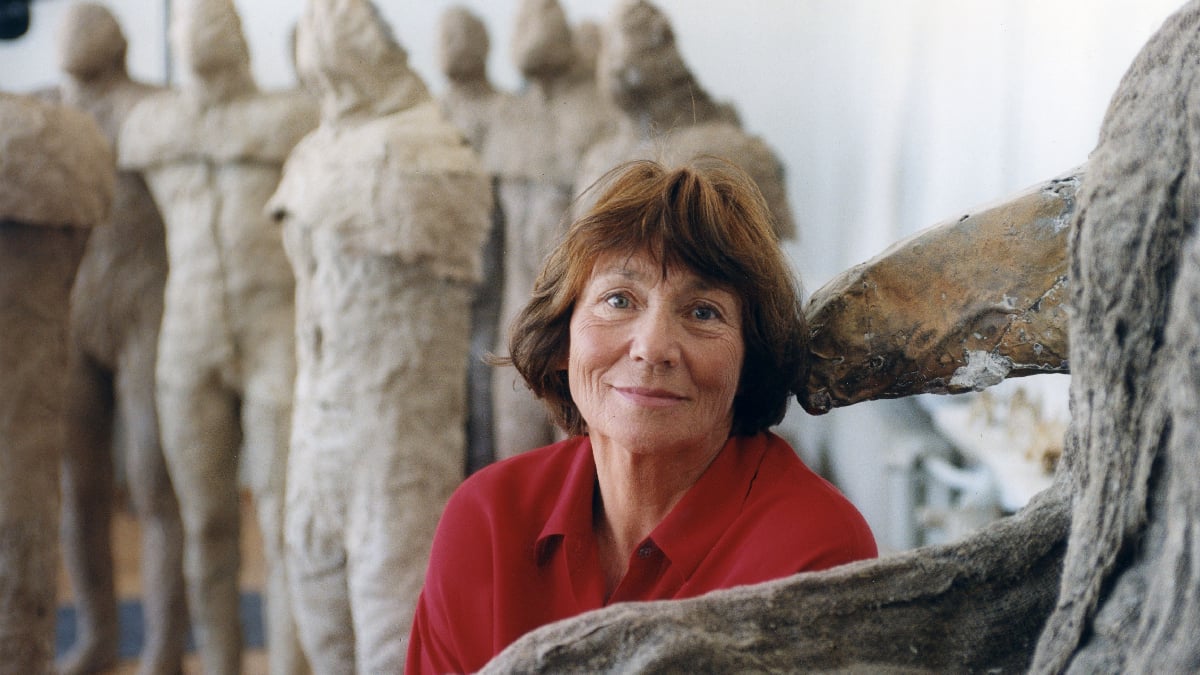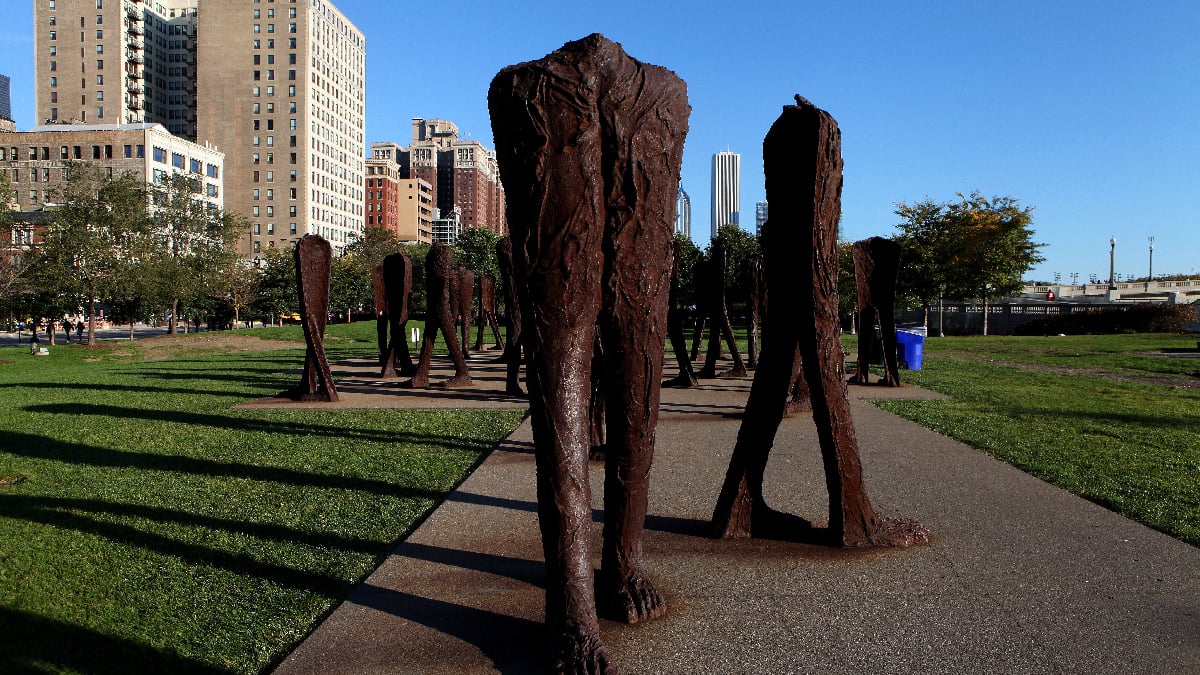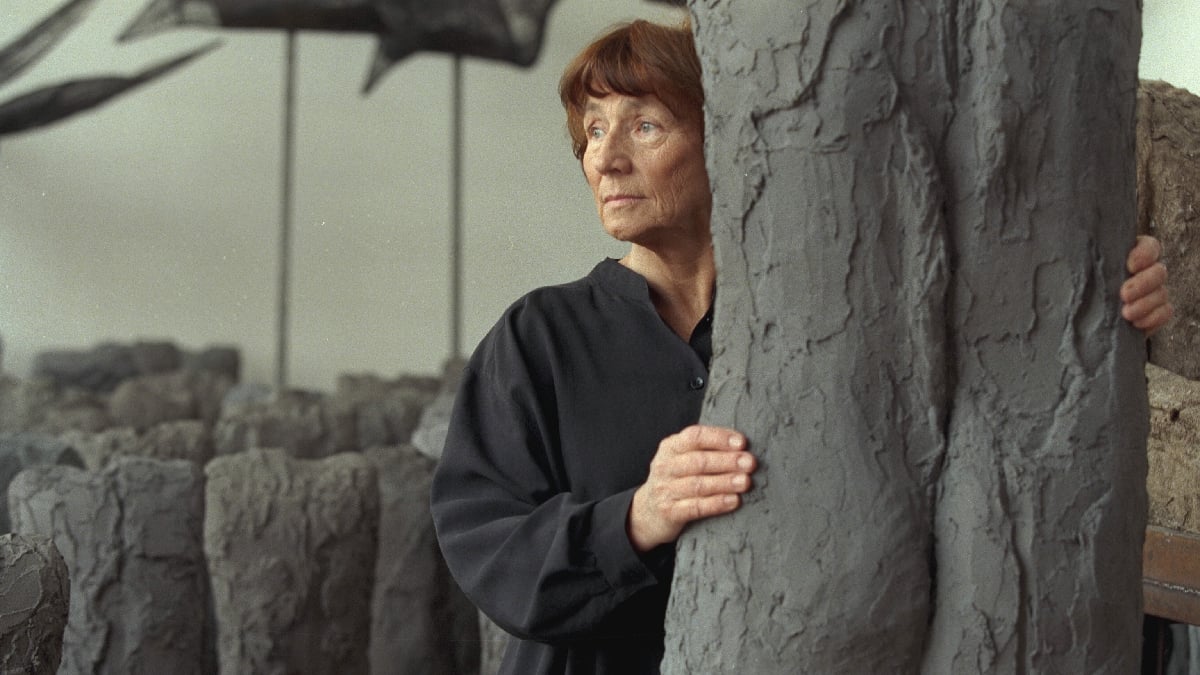Google’s carefully curated doodles seek to inform the public about vital, world-changing figures, and Magdalena Abakanowicz is certainly no exception.
The brilliant artist unfortunately passed away back in 2017, but she leaves behind a legacy of stunning works scattered across the globe. From Chicago’s iron Agora statues to her postminimalist Abakans works from the ’60s, Abakanowicz’s work will outlive the Polish sculptor by decades, if not centuries, as people continue to soak up her talent via the creative’s range of available works.
Who is Magdalena Abakanowicz?

Magdalena Abakanowicz first made a name for herself nearly 70 years ago, in the mid-’50s. Many of her earliest works are far smaller, and less imposing in appearance, but those long-ago watercolors and gouaches remain a vital part of her legacy. Google celebrated her on her birthday, June 20, as a way to maintain that shining legacy.
It is Abakanowicz’s work in sculpture that really made her a staple of the art scene, however, after — in the ’70s and ’80s — she branched out from largely textile work to begin making more concretely three-dimensional shapes. As a Polish woman born in a fraught period, Abakanowicz suffered the Nazi invasion of Poland when she was only nine years old, and the harsh impacts of the subsequent war heavily influenced her later art. It can be seen etched into, and across, her later works, as Abakanowicz worked to communicate her revolutionary zeal through sculpture.
“Art will remain the most astonishing activity of mankind born out of struggle between wisdom and madness, between dream and reality in our mind.”
By the mid-’60s, Abakanowicz was producing vital work, including the aforementioned Abakans series of fiber works. These, along with the ’70s abstract Alterations sculptures, helped elevate Abakanowicz as an artist, and gained her recognition on a global scale. They also seemingly aided in Abakanowicz finding her foundation in creating human — or human-esque — carvings, sculptures, and metalworkings. She used her works to communicate her examination of the human condition, individuality versus multiplicity, and the suppression of artistic talents forced on her people during wartime.
Where can you find her work?

Abakanowicz’s various works can be enjoyed in several locations across the United States, as well as her native Poland. The most robust collection of her art is fittingly located at the National Museum in Wrocaw, located in western Poland, but state-side fans can catch quite a few favorites on our own turf. Grant Park, Chicago boasts a permanent installation located at the southern end of the park, where people can enjoy Abakanowicz’s famous Agora sculptures. The National Gallery of Art Sculpture Garden in Washington, DC offers up Puellae, 30 bronze sculptures created in the early ’80s. Warsaw’s Romuald Traugutt Park also boasts some of Abakanowicz’s work, as do various museums and artistic centers around the globe.

